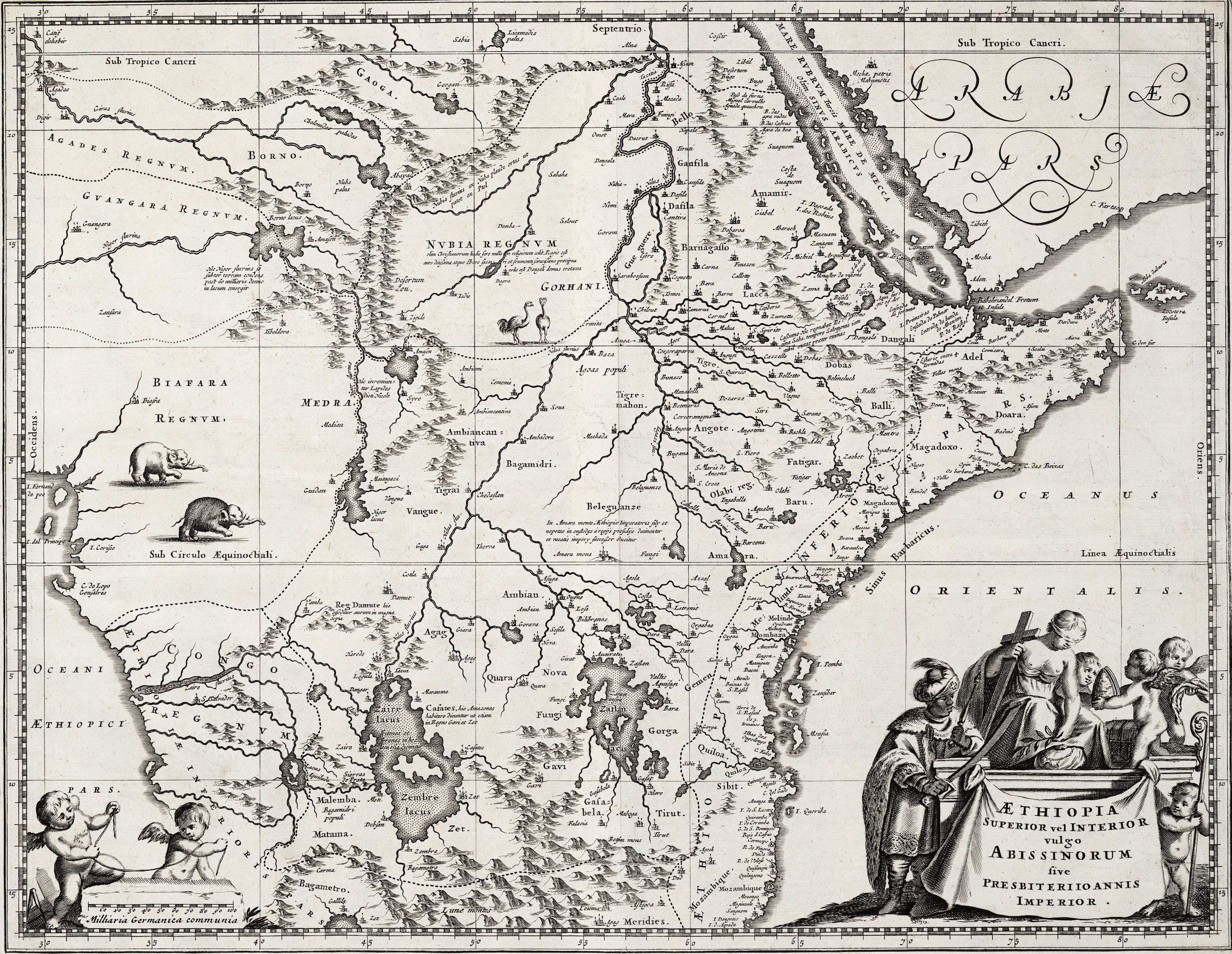Ancient Aethiopia first appears as a geographical term in classical documents in reference to the upper Nile region, as well as certain areas south of the Sahara desert. The Greek historian Herodotus specifically uses the appellation to refer to such parts of Africa as were then known within the inhabitable world.
In classical antiquity, Africa (or Ancient Libya) referred to what is now known as the Maghreb and south of the Libyan Desert and Western Sahara, including all the desert land west of the southern Nile river. Geographical knowledge of the continent gradually grew, with the first century AD Greek travelogue the Periplus of the Erythraean Sea describing areas along the Red Sea.
The Greek name 'an Ethiopian' is a compound word, derived from the two Greek words, from (aitho "I burn" + ops "face"). According to the Perseus Digital Library, the designation properly translates as Burnt-face in noun form and red-brown in adjectival form. It was used as a vague term for dark-skinned populations since the time of Homer. It was applied to such dark-skinned populations as came within the range of observation of the ancient geographers i.e. primarily in what was then Nubia, and with the expansion of geographical knowledge, successively extended to certain other areas below the Sahara.
In classical antiquity, Africa (or Ancient Libya) referred to what is now known as the Maghreb and south of the Libyan Desert and Western Sahara, including all the desert land west of the southern Nile river. Geographical knowledge of the continent gradually grew, with the first century AD Greek travelogue the Periplus of the Erythraean Sea describing areas along the Red Sea.
The Greek name 'an Ethiopian' is a compound word, derived from the two Greek words, from (aitho "I burn" + ops "face"). According to the Perseus Digital Library, the designation properly translates as Burnt-face in noun form and red-brown in adjectival form. It was used as a vague term for dark-skinned populations since the time of Homer. It was applied to such dark-skinned populations as came within the range of observation of the ancient geographers i.e. primarily in what was then Nubia, and with the expansion of geographical knowledge, successively extended to certain other areas below the Sahara.

No settlement have been created for this region yet
